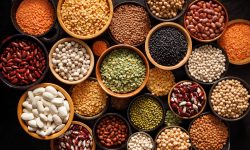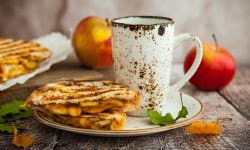What do eggplants, potatoes, peppers, goji berries, and tobacco all have in common? They’re all part of the same botanical family called nightshade, or more technically, Solanaceae. Nightshades are given the name because these plants tend to thrive in shady areas. They have also been given a bad rep for being related to the two thousand other inedible, toxic nightshades.
Are nightshades actually bad for you?
Nightshades have been labelled as toxic due to a particular alkaloid compound they produce: solanine. Solanine is the natural defence system of nightshades that is activated as poison to attack the central nervous system of any bug that tries to eat them. But the truth is, the amount it takes to kill a small bug is far beneath comparison to what it would take to harm a human being.
And while solanine is found in all parts of the plant, it is mostly found to be concentrated in the leaves and stems of nightshade plants, which is why we never eat those parts of the plants, and also why sprouted green potatoes are poisonous.
In a nutshell, nightshades are really only bad for people who have a sensitivity to solanine; in which case, it can aggravate certain disorders like arthritis since these plants can cause inflammation for those who are sensitive. Though even then, it isn’t necessary to completely avoid them considering how valuable they are in nutrients.
The nightshades we put on our table have been given a bad reputation because of their toxic relatives, but in reality, nightshades like eggplants, potatoes, peppers, and goji berries are all perfectly fine to eat. After all, humans have been eating them for centuries.
Eggplant and Chickpea Stew Slow Cooker Recipe (Vegan)
Early fall is the perfect season to enjoy certain nightshades like eggplants. Try making this flavourful, protein-rich recipe of eggplant and chickpea stew with your slow cooker!
What you need:
2 medium-sized eggplants
1 cup dried chickpeas soaked in water overnight
1/2 cup shiitake mushrooms
2 onions thinly sliced
4 cloves garlic minced
2 cups tomatoes thinly diced
1/2 cup celery chopped
3 cups hot water
1 small cinnamon stick
1 tsp salt
1 tsp ground black pepper
1 bay leaf
¼ cup fresh parsley chopped
2 tsp dried oregano
4 tbsp extra virgin olive oil
How to prepare:
- Preheat the oven 400 degrees Fahrenheit. Cut eggplants in halves then lightly coat the eggplants with olive oil. Place on a baking sheet and bake for about 25 minutes.
- Meanwhile, prepare the other vegetables. Sauteed chopped onions with 1 tablespoon olive oil for about 5 minutes, then add chopped mushrooms, chopped celery, minced garlic, oregano, cinnamon stick, salt, pepper, and bay leaf. Cook for another 1 minute before adding hot water and chickpeas. Bring to a boil then transfer to your slow cooker.
- Once the eggplants are cool enough to handle, chop them into cubes then add them into the slow cooker. Cook for 5 hours on medium. Remove the cinnamon stick and bay leaf then add in diced tomatoes and parsley. Stir and cook for another hour on medium.
This delicious stew recipe caters to vegan and gluten-free dietary restrictions. It is high in fibre and protein, and low in sugar and calories. Super healthy, flavourful, and perfect for fall.
















